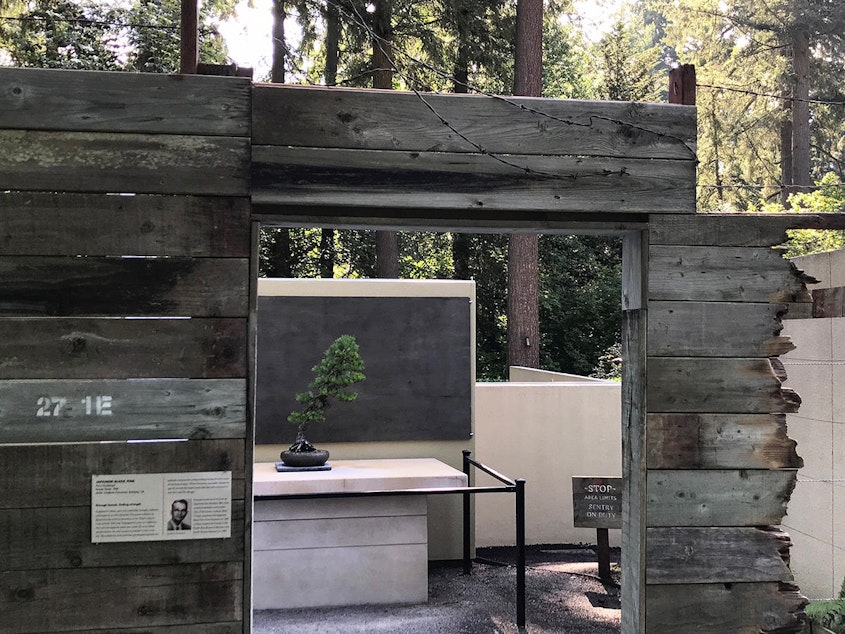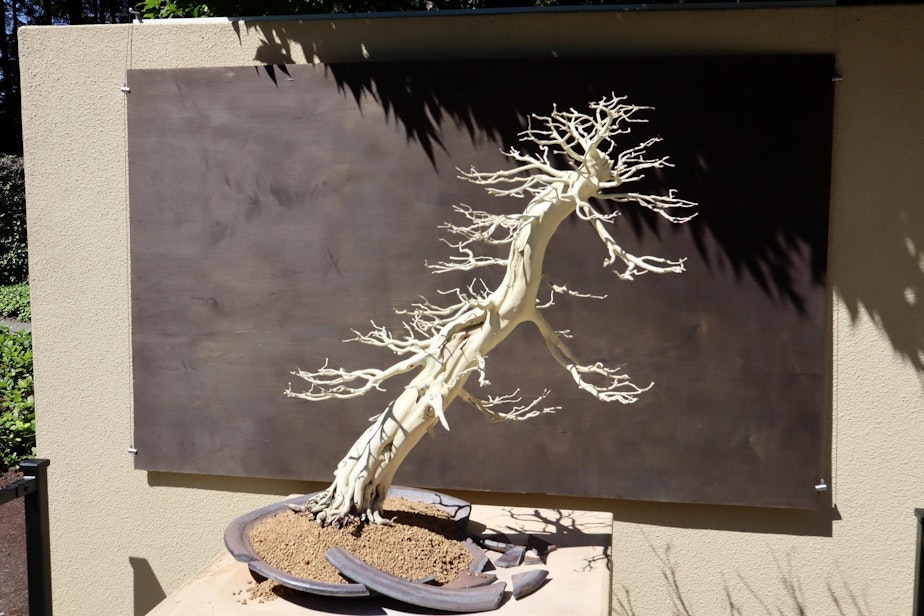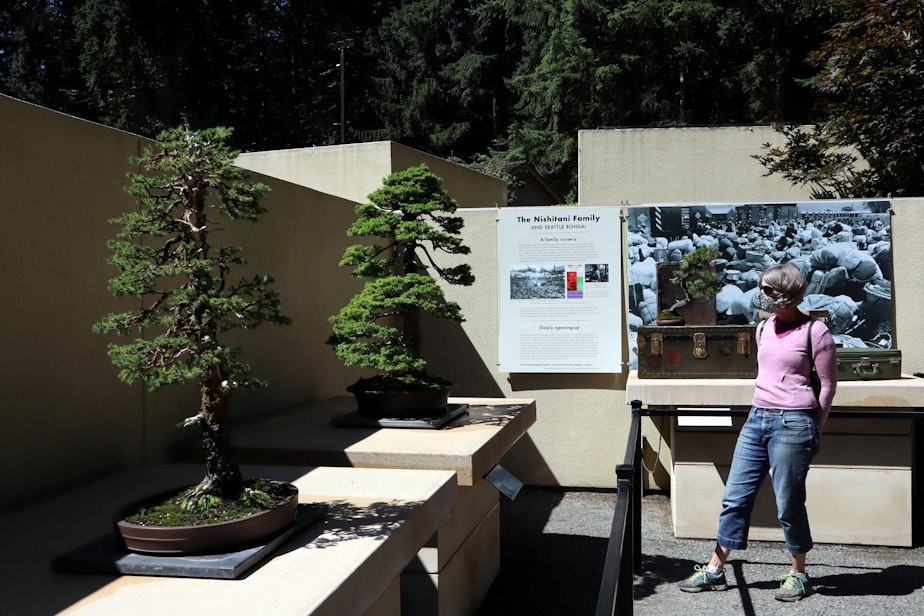Bonsai tree exhibit offers novel take on 75th anniversary of end of World War II

One of the more unusual ways the 75th anniversary of the end of World War II is being marked this summer is with an exhibit of stunted trees. They’re bonsai trees on display at the Pacific Bonsai Museum in Federal Way, Washington.
What does the contemplative art of bonsai have to do with World War II? Plenty, said Aarin Packard. He's the curator at the Pacific Bonsai Museum, which displays all kinds of the dwarfed trees pruned and trained into artistic shapes.
"I think World War II was the most significant event in terms of the art form becoming a global practice," Packard said in an interview on Wednesday, 75 years to the day after the Japanese signed the articles of surrender ending the conflict.
Packard explained that pre-war bonsai was a cultural pursuit almost completely confined in the U.S. to the Japanese-American and Japanese immigrant community.
Outside of Japan, most people had never seen bonsai or even knew what they were, Packard said.
Some American soldiers returning from Japan after the world war brought home a fascination with Japanese culture, including bonsai. Most importantly then, Japanese-American practitioners of bonsai -- many of whom were locked in internment camps during the war -- proved willing to teach the art form in English to new audiences beginning in the postwar decade.
Sponsored
Packard selected 32 bonsai trees to include in a special exhibition titled "World War Bonsai: Remembrance & Resilience." They connect to significant teachers or artist families who lived through the war. One small, leaning pine chosen as an exhibit centerpiece grew from a seedling planted in a tin can at the Topaz WWII detention camp in western Utah.
"It speaks to the value that bonsai has for helping us get through hard times," Packard said. "I think that's one of the reasons why (Japanese American Juzaburo) Furazawa wanted to plant those seeds in incarceration.”
That tree and one other made national news when two thieves stole them in February and then mysteriously returned the bonsai less than three days later, possibly due to the publicity and swift notoriety.
Packard said the themes of resilience and survival woven through the exhibit -- and the practice of cultivating bonsai generally -- relate to the times we're in now.
"Having these activities not only helps us to take our minds off our situation, but it also acts as a form of therapy and allows us to have something to invest ourselves in that has a purpose, but also looks to the future," Packard observed.
Sponsored

The first bonsai highlighted as visitors enter the exhibition is unusual because the Eastern White Cedar is completely dead.
Packard said he chose to use it "as an engaging first piece, because it's not what you expect. But it's also very symbolic of war and loss."
A museum volunteer, John Schmied, spent many, many hours sanding all the bark off the trunk and limbs and preserving the spiderweb of fragile branches on top.
"While working I began thinking about how much meaning is in this one little tree," Schmied said in an email. "The struggle it went through to survive as a tree and then as a bonsai."
Sponsored
Other bonsai featured were created by artists from Washington’s South Puget Sound region, Seattle, California, Colorado, Hawaii and Japan.
Another historic tree in the collection, the "Domoto" trident maple, is noteworthy first of all for its size in the bonsai context -- it is eight feet tall. Packard said the long-lived, twisted maple has a war backstory as well. The pampered plant survived on its own for almost four years in Oakland, California, when its caretakers were incarcerated. Its roots burst through the wooden slats at the bottom of its planter back then to reach water in the ground below.

The opening of the World War Bonsai exhibition was delayed by the coronavirus shutdown of cultural institutions this spring. During the downtime, the museum was fine tuned for safe visiting, making it now particularly "Covid-friendly" in Packard's phrasing.
The bonsai in the exhibition are all displayed outside in the fresh air. Visitors walk a one-way path past 16 alcoves featuring the living art and explanatory panels.
Sponsored
The Pacific Bonsai Museum is free to visit. Museumgoers are invited to make a donation as they leave. The attraction is tucked in the woods of the former Weyerhaeuser headquarters campus between Seattle and Tacoma. Weyerhaeuser corporate donations launched the museum's collection in the late 1980s. The bonsai museum now operates as an independent nonprofit. It describes itself as one of only two museums in the U.S. solely dedicated to bonsai.
The World War Bonsai exhibit is scheduled to run through October 2021.

